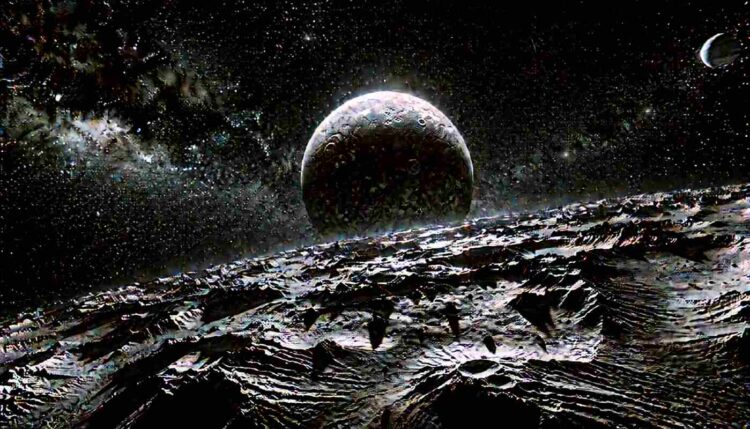What happens to planets when their stars exhaust their fuel and collapse into white dwarfs? Recent research reveals an Earth-mass planet orbiting a white dwarf, suggesting that planets like ours might endure the dramatic transformations of their suns. This discovery provides a possible glimpse into the distant future of our own solar system.
Discovery and Significance
In a study published in Nature Astronomy, astronomers reported the discovery of an Earth-mass planet and a brown dwarf orbiting a white dwarf star. This rare configuration was identified through the analysis of a microlensing event known as KMT-2020-BLG-0414. Microlensing occurs when a massive object passes between a distant star and Earth, bending and magnifying the star’s light due to gravity. This effect can reveal hidden celestial bodies, including planets and brown dwarfs, that are otherwise difficult to detect.
Microlensing Event KMT-2020-BLG-0414
According to the research team led by Keming Zhang and Weicheng Zang, the microlensing event provided crucial data indicating a three-body lens system. The analysis suggested the presence of a white dwarf orbited by an Earth-mass planet approximately 2.1 astronomical units (AU) away and a brown dwarf companion at a projected separation of about 22 AU. The white dwarf’s status was confirmed through the non-detection of lens flux using Keck adaptive optics, ruling out the possibility of a main-sequence star.
Implications for Planetary Survival
This discovery has significant implications for our understanding of planetary system evolution. It was previously theorized that terrestrial planets located beyond 1–3 AU could avoid being engulfed during the red giant phases of their host stars. The new findings provide the first observational evidence supporting this theory, demonstrating that Earth-like planets can survive the dramatic changes their stars undergo at the end of their life cycles.
Challenges to Existing Theories
The presence of both an Earth-mass planet and a brown dwarf around a white dwarf challenges existing models of planetary system dynamics. Brown dwarfs are substellar objects that are too massive to be considered planets but not massive enough to sustain hydrogen fusion like true stars. Their role in the evolution of planetary systems, especially around white dwarfs, is not well understood.
A Glimpse into Our Solar System’s Future
The findings offer a potential preview of the distant future of our own solar system. In about 5 billion years, the Sun is expected to exhaust its nuclear fuel and expand into a red giant, potentially engulfing the inner planets. This study suggests that Earth-like planets at certain distances might survive this transformation, although their environments would be drastically altered.
Methodology and Observations
The research utilized data from the Korea Microlensing Telescope Network (KMTNet) and follow-up observations with the Keck II telescope’s adaptive optics system. The team’s analysis involved complex modeling to interpret the microlensing light curve, accounting for factors like orbital motion and lens flux.
Future Research and Observations
This discovery opens new avenues for exploring the survivability of planets during stellar evolution. Further observations, particularly with advanced telescopes and instruments, could provide more detailed information about such systems. Understanding how planets can endure the death of their stars has profound implications for the search for life beyond Earth and the study of exoplanetary environments.
Conclusion
The identification of an Earth-mass planet and a brown dwarf orbiting a white dwarf is a remarkable achievement in astronomy. It not only confirms theories about the potential for planets to survive their host stars’ deaths but also challenges existing models of planetary system formation and evolution. As technology advances, continued research in this area promises to enhance our understanding of the universe and the myriad worlds within it.
References:
- Zhang, K., et al. (2024). An Earth-mass planet and a brown dwarf in orbit around a white dwarf. Nature Astronomy. Link
- NASA Exoplanet Exploration: White Dwarfs
Further Reading:
- Astrophysical Journal: Research on microlensing and exoplanet detection methods.
- Science News: Articles on planetary system evolution and the future of our solar system.




